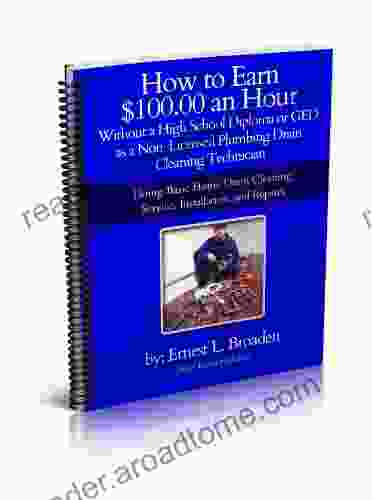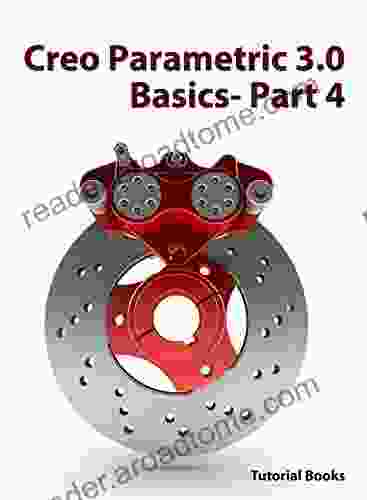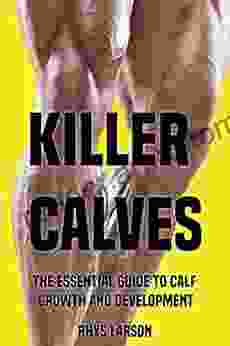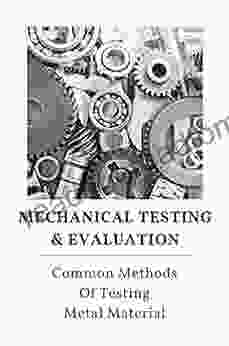Common Methods of Testing Metal Material: An Extensive Guide

In the realm of engineering, materials play a pivotal role in determining the performance, durability, and safety of structures and components. Among the various materials used in engineering applications, metals stand out due to their exceptional strength, toughness, and versatility. To ensure the quality and reliability of metal materials, rigorous testing is crucial. This article delves into the common methods used to test metal materials, providing a comprehensive guide for engineers, researchers, and quality control professionals.
5 out of 5
| Language | : | English |
| File size | : | 22494 KB |
| Text-to-Speech | : | Enabled |
| Screen Reader | : | Supported |
| Enhanced typesetting | : | Enabled |
| Lending | : | Enabled |
Tensile Testing
Tensile testing is a fundamental method used to determine the strength and ductility of metal materials. In this test, a specimen of the metal is subjected to a controlled tensile load, which is gradually increased until the specimen fails or yields. The data obtained from tensile testing includes:
- Yield strength: The stress at which the specimen begins to deform plastically.
- Ultimate tensile strength: The maximum stress that the specimen can withstand before failure.
- Elongation at break: The percentage of permanent deformation that the specimen undergoes before failure.
Hardness Testing
Hardness testing measures the resistance of a metal to permanent deformation. Various hardness tests exist, including:
- Brinell hardness test: Uses a hardened steel ball to indent the metal surface.
- Vickers hardness test: Uses a diamond indenter to create a square-shaped indentation.
- Rockwell hardness test: Uses either a hardened steel ball or a diamond indenter to create a permanent indentation.
Fatigue Testing
Fatigue testing evaluates the ability of a metal to withstand repeated cycles of loading and unloading. This test is particularly important for components subject to dynamic loads, such as aircraft wings and automotive parts. Fatigue testing determines the fatigue life of a metal, which is the number of cycles to failure under a specified load.
Impact Testing
Impact testing measures the toughness of a metal, which is its ability to absorb energy and resist fracture under impact loads. The most common impact test is the Charpy V-notch test, which uses a notched specimen to concentrate the impact energy. The energy absorbed by the specimen before failure is a measure of the metal's toughness.
Non-Destructive Testing
Non-destructive testing (NDT) methods allow for the evaluation of metal properties without causing permanent damage to the material. NDT methods include:
- Ultrasonic testing: Uses high-frequency sound waves to detect internal defects.
- Radiographic testing: Uses X-rays or gamma rays to create an image of the internal structure of the metal.
- Magnetic particle testing: Uses magnetic particles to detect surface and near-surface defects.
- Eddy current testing: Uses electromagnetic induction to detect surface defects and variations in material properties.
Destructive Testing
Destructive testing involves physically breaking or damaging the metal specimen to determine its properties. Destructive testing methods include:
- Tensile testing: As described earlier, tensile testing involves pulling a specimen to failure.
- Compression testing: Compresses a specimen until it fails or yields.
- Shear testing: Applies a force to a specimen to cause it to fail in shear.
Selecting the Appropriate Testing Method
The choice of testing method depends on the specific properties of the metal material and the intended application. Factors to consider include:
- Material properties: The type of metal and its expected properties, such as strength, hardness, and ductility.
- Application: The intended use of the metal, which may dictate specific performance requirements.
- Testing capabilities: The availability of testing equipment and the expertise required to perform the tests.
The testing of metal materials is an essential aspect of quality control and engineering design. By employing a wide range of testing methods, engineers and researchers can assess the properties and performance of metal materials, ensuring their suitability for various applications. From tensile testing to non-destructive testing, each method provides valuable insights into the characteristics of metal materials, allowing for the development of safe, reliable, and efficient engineering structures and components.
5 out of 5
| Language | : | English |
| File size | : | 22494 KB |
| Text-to-Speech | : | Enabled |
| Screen Reader | : | Supported |
| Enhanced typesetting | : | Enabled |
| Lending | : | Enabled |
Do you want to contribute by writing guest posts on this blog?
Please contact us and send us a resume of previous articles that you have written.
Light bulbAdvertise smarter! Our strategic ad space ensures maximum exposure. Reserve your spot today!

 Shannon SimmonsUnlock the Power of Earning $100,000 an Hour: A Comprehensive Guide for...
Shannon SimmonsUnlock the Power of Earning $100,000 an Hour: A Comprehensive Guide for...
 Henry Wadsworth LongfellowCreo Parametric Basics: Unlocking the Power of Part Assemblies and Drawings
Henry Wadsworth LongfellowCreo Parametric Basics: Unlocking the Power of Part Assemblies and Drawings Jake CarterFollow ·18.6k
Jake CarterFollow ·18.6k Cristian CoxFollow ·11.7k
Cristian CoxFollow ·11.7k Jacques BellFollow ·8.5k
Jacques BellFollow ·8.5k Colin FosterFollow ·16.3k
Colin FosterFollow ·16.3k Donald WardFollow ·8k
Donald WardFollow ·8k Cody RussellFollow ·3.2k
Cody RussellFollow ·3.2k Rod WardFollow ·11.4k
Rod WardFollow ·11.4k Dan BrownFollow ·19.7k
Dan BrownFollow ·19.7k

 Brady Mitchell
Brady MitchellUnveiling the Apprehended Vital Truth for the Bride of...
In the tapestry of life, where trials and...

 Eric Nelson
Eric NelsonDivine Energy Harmony Way: Embracing the Power Within for...
In the realm of personal...

 Robert Louis Stevenson
Robert Louis StevensonUnlock the Secrets of Calf Growth and Development: A...
Are you an aspiring...

 Gerald Parker
Gerald ParkerPhysician Life In The Shadow Of Polio: A Harrowing and...
A Riveting Tale of Determination Amidst a...
5 out of 5
| Language | : | English |
| File size | : | 22494 KB |
| Text-to-Speech | : | Enabled |
| Screen Reader | : | Supported |
| Enhanced typesetting | : | Enabled |
| Lending | : | Enabled |


















































